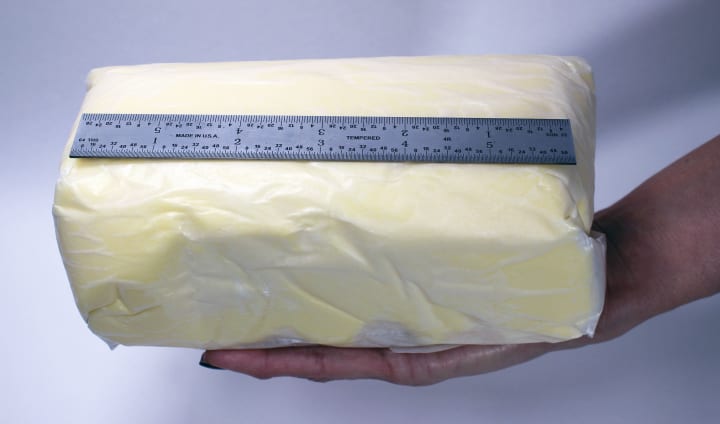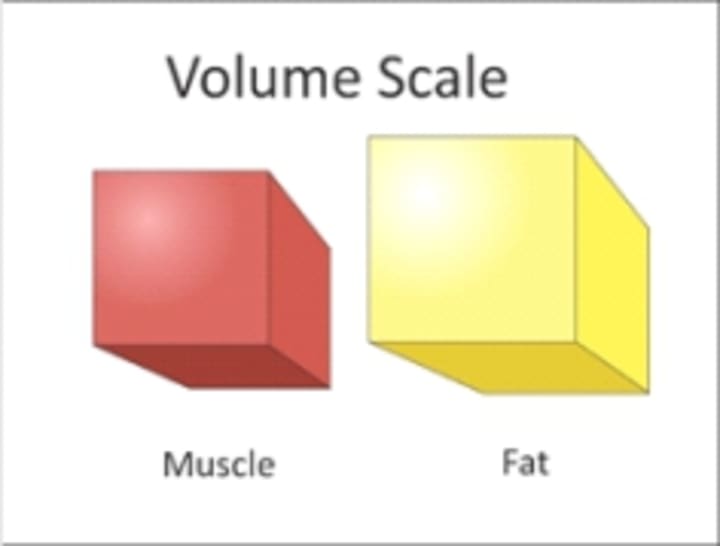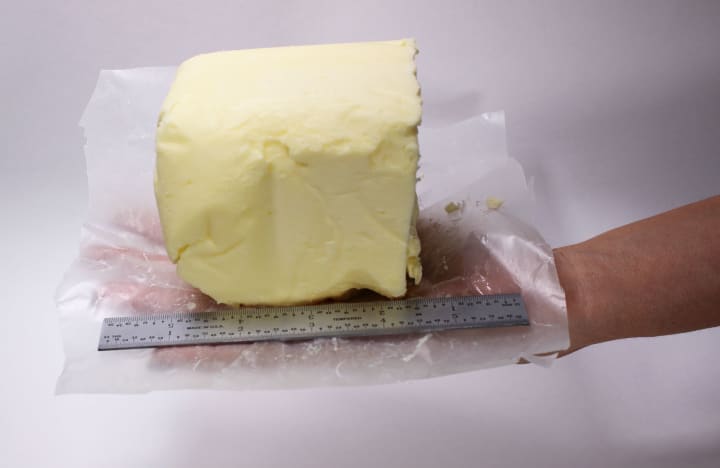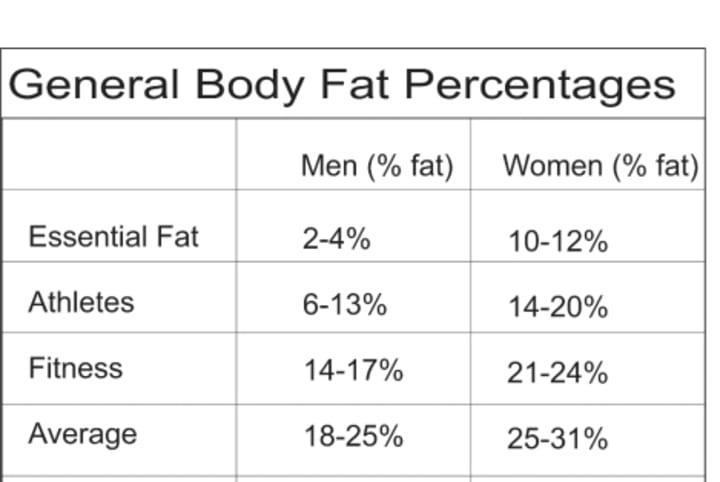Understanding Fat — The Secret To Getting Your Body Fat Under Control
Fat is an organ, reducing your body fat begins with understanding how it functions.
America has a growing obesity problem
We have gone from a country with a population obesity of less than 14% (1960) to a population obesity of over 38% (2014). The impact on the health of America’s population has been devastating, with related increases in metabolic syndrome that include diabetes and high blood pressure¹.
Reducing the amount of excess fat you’re carrying will not only make you look and feel better, but it also has many positive health benefits.

Not all fat is bad. Your body needs fat to be healthy. There is a body fat percentage chart that details the ranges of healthy body fat.
Fat is not an accumulation of inert cells. Fat is not inert. Fat is an organ, a part of your endocrine system. As part of your endocrine system, it can receive and transmit chemical messages to your brain and the rest of your body.
Fat produces enzymes and hormones that control our appetite and energy metabolism, influence our immune system and thyroid, insulate our organs, and enable our body’s development.
Hunger Hormones
The two main hunger hormones are Leptin and Ghrelin. Leptin is produced by fat cells. It notifies your brain that you have eaten enough and suppresses your appetite. Ghrelin is made in the stomach and sends signals to the brain that you are hungry; it’s an appetite-increasing hormone. Leptin and ghrelin work together to maintain your body’s weight and metabolism. It would be great if we could take a leptin pill to turn off our appetite and lose fat, but scientists found leptin doesn’t work like that. Obese people typically have elevated levels of leptin and are leptin resistant.
Energy Storage
Fat cells, surprisingly enough, (or not surprisingly) store fat. Fat cells can expand their volume more than one thousand times the normal size to store more and more fat. Yikes, right? Primarily, fat is our central energy reserve and manages our energy storage. You may have read about fat cells referred to as adipocytes and fat generally referred to as adipose tissue.
Muscle Weighs More than Fat (Barely)
When comparing equal volumes of muscle and fat, muscle weighs more than fat; we’ve heard that before. The density of fat is approximately 0.9 g/mL. The density of muscle tissue is approximately 1.06 g/mL. The picture below illustrates the volume relationship for equal weights of muscle and fat. This scale holds whether we are discussing kilograms or pounds.

I have seen other writers use graphics comparing equal weights of fat and muscle where the fat volume is twice the volume of muscle. That’s inaccurate. Fat has about 15% more volume than muscle.
However, if we compare the caloric densities, fat is about 9 calories per gram while muscle tissue is about 4 calories per gram. So, calorie-wise, fat has a bit more than twice (2.25X) the calories of muscle.
Okay, so the diagram shows the volumetric relationship between fat and muscle, but what does a pound of fat look like, and how big is it, and how much space does it occupy?
Well, you can buy an accurate model of fat tissue (1lb or 5 lbs) from a science supply company, or you can look in your refrigerator for some butter. The density of butter is about 0.95 g/mL. Just a tiny bit denser than fat. Hold a one-pound bar of butter in your hand, and that’s a very good volume approximation of a pound of fat. The picture below is one pound of butter.

When you work out and eat clean for two weeks, and you say to yourself, I only lost a pound? That one pound of butter is equal to the volume of one pound of fat you lost. Have you lost two pounds? Look at the two pounds of butter photograph I shot for this article. That two pounds of butter is the volume equivalent to the volume of two pounds of fat.
Lost five pounds? Try holding five 1 pound butter bars in your hands and complain that you worked out for two months and only lost five pounds.
When you start hitting a loss of 10 pounds of fat, go to the supermarket and try holding 10 one-pound bars of butter in your hands. Would you want to put 10 of those pounds back on your body?
Lose 20 or more pounds? Load up a shopping cart with an equal amount of pounds of butter. Look at that volume. Ever think you want to put that back on?
Motivational
Do you want to instill a little motivation into your exercise and nutrition routine? I have a suggestion. Go to your grocery store or supermarket and actually purchase a two-pound slab of butter. Once you are home, examine it, hold it in your hands, throw it up and catch it in your hands a few times. Know that this accurately represents two lbs of fat. Develop the tactile and physical knowledge of two lbs of fat. This knowledge may help you stay on your exercise and nutrition programs when you think of the consequences of putting that fat back onto your body. I know it helps me.
Storage
Our body stores fat in three ways: subcutaneously, meaning under the skin; visceral, deep in the body and around organs; and intramuscular, between the muscles, think of marbleized steak. When your body fat percentage becomes excessive, visceral fat is usually considered least desirable.
Types of Fat
There are two types of fat, white and brown (and sometimes beige — okay, that’s three, maybe). White fat is the type of fat we typically think of when we think of fat. White fat stores energy, and it’s the type of fat we desire to lose the most. Brown fat is brown because it is packed with energy-producing mitochondria and burns energy. Beige fat is white fat converted to a (similar to brown) energy-burning fat.
Brown fat burns white fat for energy and heat, a process called thermogenesis. The body only has a small reserve of brown fat. In general, you want to increase your energy-burning fat and decrease your white fat. There are a few ways to convert white fat into beige fat. One method is exercise. When exercising, muscles release a hormone called irisin that sends a message to fat cells to convert to beige fat. Another conversion method is exposure to cold².
Maintaining a healthy level of body fat percentage is the key to a balanced endocrine system and wellness. This means including healthy fats in our diet. One nutritional mantra I use is, fats will keep me thin, bad carbs will make me fat. Sugar is not even considered in my diet. But that’s me, as I need to keep a watchful eye on my blood sugar and A1C values.
Good fat gone bad is when body fat percentage becomes excessive, especially around the midsection. There is a litany of damaging results from carrying excess fat.
Negative consequences associated with excessive fat
· Reduces brain weight and volume.
· Decreases cognitive function.
· Increases the likelihood of developing dementia in later years.
· Increases likelihood of high blood sugar (glucose) and insulin resistance.
· Increases likelihood of developing diabetes.
· Increases the likelihood of developing heart disease.
· Increases the likelihood of developing high blood pressure.
· Reduces testosterone: Aromatase in fat converts testosterone to estrogen.
Where does your body fat percentage fall, according to the following chart?

If your body fat percentage is average or less, you’re fine. You have a healthy body fat percentage.
However, if your body fat percentage is above the average fat rate, you have some work to reduce your body fat percentage. It is essential to lower your body fat percentage to optimize your health, increase your testosterone, and decrease your biological age.
Your takeaway from this is not to concern yourself with your weight; concern yourself with your body fat percentage. Use your body fat percentage to guide fat loss: target, men 25% body fat or less, women, 31% or less.
How Many Calories in a Pound of Fat?
That’s common knowledge. Search the internet, and the answer is 3500 calories, right? And this is the number we’ll use, but have you ever checked it? Let’s go back to square one. There are 9 calories per gram of fat. Okay. There are 453 grams (minus any decimal) in a pound. Using math we get 9 cal/gm X 453 gm/lb = 4077 calories per pound. Hmm, what happened? 4077 calories are certainly not 3500 calories. Further research shows the lipid content of fat is 87%. If we multiply our result of 4077 by 87%, we get (4077 X 0.87 = 3546 calories). Okay, that’s close enough; we’re in the ballpark. The problem is, all the numbers used are an estimate. From the calories per gram of fat to the lipid percentage of fat.
Want more proof? Look up the calories in a pound of butter. Surprisingly, or not surprisingly, it’s a close approximation of the calories in a pound of fat. But the calorie content is all over the place. The calories I found are; 3178, 3232, 3240, and 3437.
This imprecise information extrapolates to everything. Think about it, if we can’t get a handle on the number of calories in a gram of fat, how can we accurately figure out the caloric content of a cookie or cake? Don’t go crazy about this caloric approximation. And remember, everyone is different, so your metabolism and calorie burn during exercise may differ from my metabolism and calorie burn. Your caloric content in a gram of fat may be slightly different from mine. Everything is an approximation.
Do not use this information to fool yourself. Don’t be eyeing a 300 calorie snack and say to yourself, well, maybe it’s really only 200 calories. Oh no, calories may be an approximation, but it’s a good approximation.
The precise imprecision of science.
When a Calorie is not a calorie
We’re talking so much about calories; we should define it. Is the title of this section confusing? It won’t be in a minute. A calorie is defined as the energy required to raise one gram of water to one degree Celsius. What we in the United States call a Calorie (notice the Big C) is really a kilocalorie, or 1000 calories. There is enough energy in a Calorie to raise one liter (1000 grams) of water to one degree Celsius.
People started drinking cold water, hoping this would help them burn calories to lose weight. Good idea, it works, but not as well as they hoped. Take 8 ounces of cold water, say at 18 degrees Celsius (65'F), drink it, and the body burns calories, heating the water to body temperature at 37 degrees Celsius (98.6'F). That’s a net change of 19 degrees. Eight ounces of water is about 236 ml (grams) of water. Doing the math, we get 19 x 236 = 4,484 calories (notice the little c). According to the math, the body burns 4,484 calories, raising the cold water to body temperature.
Obviously, you’re not burning off over a pound of fat (3500 Calories) drinking an 8 oz. glass of cold water. What happened? People got the little “c” calorie mixed up with the big “C” Calorie. Using the big “C” Calorie, drinking the cold glass of water burns about 4.4 Calories.
If you want to lose a pound of fat by drinking cold water, that works out to drinking about 800 glasses of cold water. Bottoms up.
Reducing Body Fat
If you want to lower your body fat percentage to a healthy level, two approaches are eating clean and exercising. Both approaches are covered in separate articles on these topics. Here’s a hint, in my opinion, reducing fat follows the 80/20 rule. It’s 80 percent nutrition and 20 percent exercise. In this article, I am supplying a few tips on reducing the negative effects of fat and using gut bacteria.
Ameliorating Fat’s Effects — Shunting Estrogen Production
While we are in the process of shedding excess fat, here’s what we can do to alleviate some of the excessive fat’s negative consequences.
Aromatase is a natural enzyme that exists in many body tissues. Aromatase converts testosterone to estrogen. To be in proper hormonal balance, males need a small amount of estrogen in their bodies to function correctly. Women need a fair amount of testosterone in their bodies. Aromatase conversion in both sexes is a good thing. But too much of a good thing can become a bad thing. And that’s what happens when you have a lot of excess fat, especially around the abdomen.
The aromatase in fat converts your testosterone into estrogen, exceeding the male body’s requirement for estrogen. In women, it depletes the needed testosterone. Excessive fat initiates a vicious cycle. As aromatase converts testosterone into estrogen, testosterone level drops, resulting in lost muscle tissue, while the higher estrogen level makes it easier to put on additional fat. The extra fat increases your aromatase capacity to reduce your testosterone even further.
As part of your fat loss strategy, it may be helpful to reduce the effects of aromatase by adding natural anti-aromatase foods and supplements to your diet.
Natural Anti-Aromatase Compounds
The following is a list of natural anti-aromatase compounds that may be used to lessen the effects of excess fat.
Pomegranate Juice: Purchase natural unsweetened juice and drink about 10 ounces per day. You don’t have to drink 10 ounces of juice in one sitting; it can be split up during the day. Pomegranate is an anti-aromatase³, and increases testosterone in men⁴.
Other benefits include antioxidant, anti-inflammatory, and anticarcinogenic effects, reducing high blood pressure, high cholesterol, and high blood sugar⁵.
Cruciferous Vegetables: Such as broccoli, cauliflower, and cabbage contain the compound 3,3'-Diindolylmethane (DIM). DIM is a natural anti-aromatase. I recommend one to two servings per day. Aside from providing the DIM nutrient, these vegetables help you lose fat; they are low in calories, and they add fiber which promotes satiety. High-fiber diets are associated with long-term fat loss. Cruciferous vegetables add essential vitamins and minerals into your diet, as well as improve your gut microbial bacteria.
DIM Supplement. DIM is also available as a supplement. I hesitate to recommend the supplement because most research on DIM is focused on women’s health and breast cancer. There is a possibility that DIM supplements may be biphasic for men. It may help reduce estrogen at low doses, but at high dosages, it has a degenerative effect on the testes and sperm; T levels decrease, and estrogen increases. This particular study was performed on male rats⁶ , but it is indicative of the complexity of biochemistry involved with taking supplements. To be safe, don’t mega dose on DIM supplements; it may be that a little is better than a lot. I wouldn’t take more than 50–100 mg of DIM per day. Obtaining nutrients like DIM from foods is sometimes safer than supplements, and the possibility of overdosing is remote.
Resveratrol. So many good things to say about resveratrol. A meta-analysis of 36 trials indicated that supplementing with resveratrol improves weight loss and blunts fat accumulation by decreasing adipogenesis⁷. Resveratrol also improves glucose control, insulin sensitivity, and diabetes⁸. In addition, resveratrol increases the capacity for brown fat thermogenesis⁹. The dosages for resveratrol used in these studies are all across the board, from 5 mg per day to 1500 mg per day. The dosage I use is 150 mg 3x a day with meals.
Ginseng. This plant has been used for thousands of years to treat various ailments. Any plant that is reported to enhance sexual health needs to be investigated for potential testosterone boosting effects. Ginseng extract is an anti-aromatase¹⁰. Ginseng is also said to lower blood sugar, reduce fatigue, treat ED, lower high blood pressure, increase the immune system, and improve concentration and learning. It’s easy to see why Ginseng is a popular herbal medicine. Being so popular has its drawbacks. Other herbs on the market call themselves Ginseng but do not contain the active ginseng ingredient, ginsenosides. If you decide to try Ginseng, purchase from a reputable company. Dosing is also hard to establish as the quality and percentage of active ingredient varies with each manufacturer. I take Panax Red Ginseng 200 mg, 3X a day with meals. My ginseng supplement is 20% Ginsenosides, which works out to 40 mg per tablet. Check with your doctor for any potential drug interactions or cautions.
Others: A quick internet search will list other anti-aromatase foods like onions, celery, white button mushrooms, and Chrysin. Yeah, I don’t eat onions or celery, and the only mushrooms I eat are on my steak (flame-broiled, medium rare, thank you.) I don’t know what kind of mushrooms my steakhouse uses, and I haven’t asked. Who am I to tell them what mushrooms to cook?
Is there more to do than what I’ve done? Sure. Always is. For instance, Chrysin’s in vitro anti-aromatase properties are super, equivalent to anti-aromatase prescription drugs like Arimidex. Read these studies, and it’s like; Wow, wow, wow! The problem is when orally ingested (in vivo), the absorption of Chrysin is so tiny, it is negligible. Read negligible as useless¹¹ Oh well.
Using Gut Bacteria for Fat Loss
The probiotic Lactobacillus Gasseri has been shown to modestly decrease abdominal visceral and subcutaneous fat by 4.6% over the 12-week double-blind study period. This works out to an average 1.4% drop in body weight, 1.5% drop in BMI, and a 1.8% drop in waist circumference.
The Lactobacillus Gasseri¹² is a probiotic available from nutritional stores such as Swanson Vitamins. I do not have any financial interest in Swanson Vitamins or benefit in any way. This mention is not an endorsement of their product.
How To Support Your Microbiome To Supercharge Your Health
Adenovirus 36 and Obesity
Adenoviruses are linked to increased obesity in both experimental animals and naturally infected human. Monkeys infected with adenovirus 36 (Adv36) show a 15–30% increase in body weight. A 2005 study shows 30% of obese adults had been infected with Adv36. The same study showed that only 11% of non-obese adults had a prevalence of ADV36.
So being infected with Adv36 is a risk factor for obesity. I recommend keeping a watchful eye on any development of an antiviral Adv36 compound that may become available. (Study) (Study)
Losing Excessive Fat Is A Process
The popular methods of fat loss regard regulating food consumption and working out. I will not repeat the basic information provided. Instead, I’d like to offer two more tips.
The first tip is one that you probably already know, diets don’t work (in the long run). If any diet worked, you wouldn’t have a list of new diet books coming out every year with the promise of reducing your body fat. You’d have a few standards proven to work, and everyone would be following those diets.
Obesity is complex, is not always a question of calories in versus calories out. As stated, every person’s metabolism is different. What works for one person may not work for another. But here is a tip that ought to work for everyone.
A good night’s sleep is an essential factor when trying to lose weight. A lack of sleep will cause changes in your metabolism, similar to stress.
Stress has a few pronounced negative impacts on weight loss. Primary it increases cortisol and makes it harder for your body to regulate your blood glucose values, which leads to a similar insult to your insulin responses. Stress will increase the hungry hormone ghrelin increasing your appetite and decrease leptin, the hormone that tells your body you’re full.
References
1 Prevalence of Overweight, Obesity, and Extreme Obesity Among Adults Aged 20 and Over: United States, 1960–1962 Through 2013–2014. (2019, June 4). Retrieved from https://www.cdc.gov/nchs/data/hestat/obesity_adult_13_14/obesity_adult_13_14.htm
2 Beige Adipocytes are a Distinct Type of Thermogenic Fat Cell in Mouse and Human. (20). Retrieved from https://www.ncbi.nlm.nih.gov/pmc/articles/PMC3402601/
3 Anti-aromatase phytochemicals in pomegranates reduce hormone-dependent breast cancer. (2010, January 5). Retrieved from https://www.news-medical.net/news/20100105/Anti-aromatase-phytochemicals-in-pomegranates-reduce-hormone-dependent-breast-cancer.aspx
4 Pomegranate juice intake enhances salivary testosterone levels and improves mood and well being in healthy men and women | SFEBES2012. (2012, March 1). Retrieved from https://www.endocrine-abstracts.org/ea/0028/ea0028p313.htm
5 Potent health effects of pomegranate. (n.d.). Retrieved from https://www.ncbi.nlm.nih.gov/pmc/articles/PMC4007340/
6 Aksu EH , et al. (n.d.). 3,3 diindolylmethane leads to apoptosis, decreases sperm quality, affects blood estradiol 17 β and testosterone, oestrogen (α and β) and androgen r… — PubMed — NCBI. Retrieved from https://www.ncbi.nlm.nih.gov/pubmed/26926141
7 Tabrizi R , et al. (n.d.). The effects of resveratrol intake on weight loss: a systematic review and meta-analysis of randomized controlled trials. — PubMed — NCBI. Retrieved from https://www.ncbi.nlm.nih.gov/pubmed/30421960
8 Resveratrol and diabetes: from animal to human studies. (n.d.). Retrieved from https://www.sciencedirect.com/science/article/pii/S0925443914003196?via%3Dihub#bb0490
9 Fernández-Quintela A , et al. (n.d.). Antiobesity effects of resveratrol: which tissues are involved? — PubMed — NCBI. Retrieved from https://www.ncbi.nlm.nih.gov/pubmed/28796895
10 Zhang Y , et al. (n.d.). Extraction, isolation, and aromatase inhibitory evaluation of low-polar ginsenosides from Panax ginseng leaves. — PubMed — NCBI. Retrieved from https://www.ncbi.nlm.nih.gov/pubmed/28027838
11 Disposition and metabolism of the flavonoid chrysin in normal volunteers. (n.d.). Retrieved from https://www.ncbi.nlm.nih.gov/pmc/articles/PMC2014445/
12 Kadooka Y , et al. (n.d.). Regulation of abdominal adiposity by probiotics (Lactobacillus gasseri SBT2055) in adults with obese tendencies in a randomized controlled trial. — PubMed — NCBI. Retrieved from https://www.ncbi.nlm.nih.gov/pubmed/20216555
Disclaimer
The content and information contained in this article are for informational purposes only. The information provided in this article is not and must not be taken as an alternative to any advice by a doctor, physician, or medical professional.
The author, John Iovine, has narrated his research experiences in this article by observing and evaluating facts and figures. The reliance on the facts and figures has been done in good faith and believed to be reliable according to the author’s best knowledge. The sources of referenced information could change or be updated in the future. The author cannot guarantee the validity and accuracy of the sources, which may change, be modified, updated, or removed in the future, and thus, disclaims himself from any such changes, modifications, updates, and removals.
About the Creator
John Iovine
Science writer






Comments
There are no comments for this story
Be the first to respond and start the conversation.